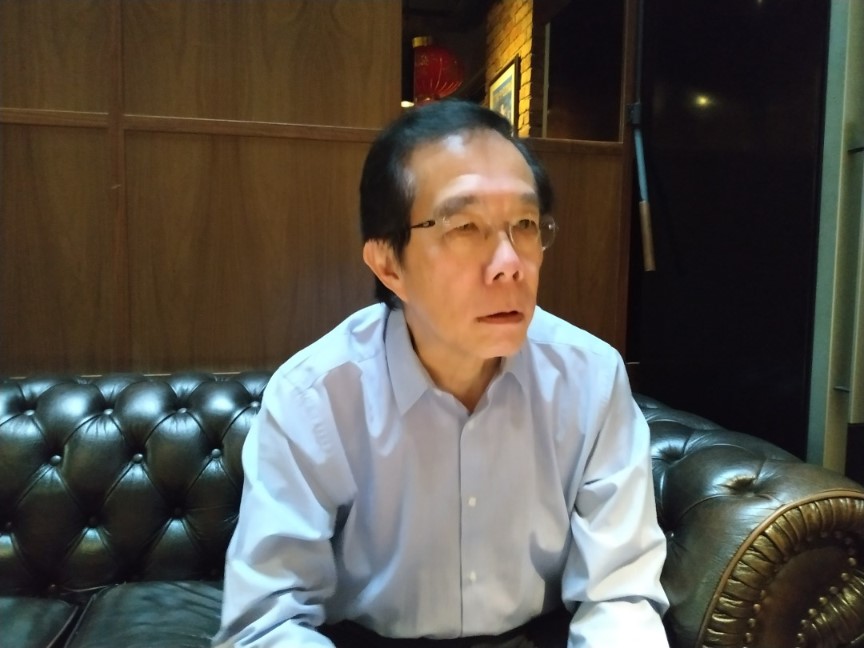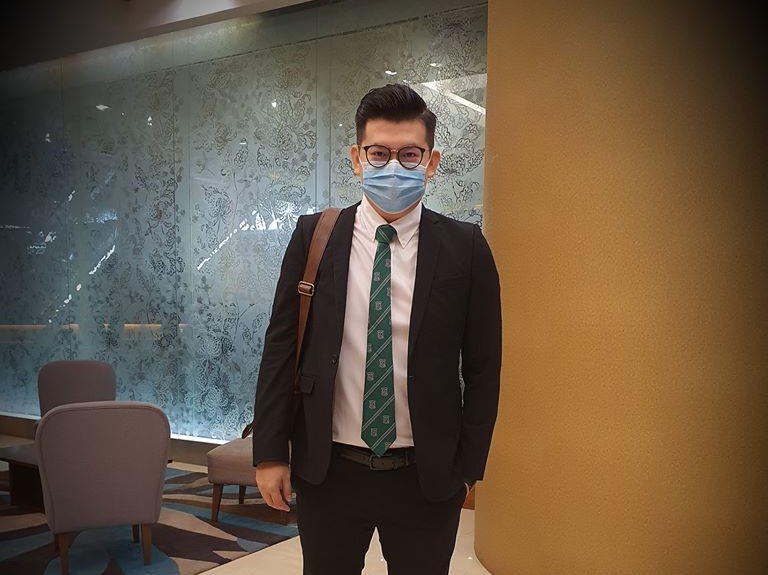KUALA LUMPUR, July 28 — Sarawak reported 48 new Covid-19 cases in the past week, comprising 40 per cent of the 120 cases confirmed nationwide in the 30th epidemiological week from July 19 to 25.
The federal Ministry of Health (MOH) even sent a team led by its deputy director-general (research and technical support) to Sarawak, which made up nine of 23 active coronavirus clusters in the country, last week to help manage the outbreak in the East Malaysian state.
Medical experts said among the reasons for the rise of reported Covid-19 cases in Sarawak were the state’s stringent testing policy, sampling procedures, and aggressive contact tracing.
Malaysian Medical Association (MMA) Sarawak branch chairman Dr Morni Abu Samat said Sarawak’s standard operating procedures (SOP) in testing arrivals in Kuching differed from federal testing at the Kuala Lumpur International Airport (KLIA).
“Sarawak is unique, our SOP slightly differs from Putrajaya. They are tailored for Sarawak,” the Malaysian Medical Association (MMA) Sarawak branch chairman Dr Morni Abu Samat told CodeBlue in an interview.
“Sarawak wants to prevent imported cases into Sarawak. They’re worried about asymptomatic carriers from outside Sarawak. It’s proven — almost all the positive cases from outside Sarawak are asymptomatic. Those who are positive, tested negative for Covid-19 prior to entering Sarawak,” he added.
This month, Sarawak reported seven cases of people testing positive on the gold-standard RT-PCR test upon landing in Sarawak, despite earlier testing negative for the coronavirus with the antigen rapid test kit (RTK) at KLIA when they returned to their home country from overseas.
Dr Morni pointed out that Sarawak conducts compulsory RT-PCR tests for all arrivals from outside Malaysia on the second and 10th day of their 14-day mandatory quarantine at the state’s designated quarantine centres. Sarawak authorities also previously randomly conducted the test on 10 per cent of Malaysians who travelled to the state from different parts of the country.
The Sarawak Disaster Management Committee (SDMC) said last Sunday that state policy for Malaysians entering Sarawak from West Malaysia, Sabah, and Labuan would change, effective from August 1 to 14, where all Malaysians (both Sarawakian and non-Sarawakian) would be swabbed with the PCR test on the second day of quarantine after arriving in Sarawak. If PCR results are negative, they will be released from quarantine. The Sarawak government bears the cost of quarantine for Sarawakians.
The policy for Sarawakians returning home from overseas remains unchanged, with the state government saying there is no need for a PCR swab three days before departure as the federal regulation no longer applies, according to Sarawak Local Government and Housing Minister Dr Sim Kui Hian.
“Sarawak is capable of doing a lot of tests. They do very well on contact tracing actively. All close contacts are tested,” Dr Morni said.
Since June 10, the federal government introduced mandatory home quarantine in West Malaysia and Sabah for returnees from abroad as Covid-19 cases started to subside in the country. They were required to undergo Covid-19 tests on the 13th day of quarantine.
But after 16 per cent, or 2,897 of 17,897 returnees, failed to turn up for their second test on the 13th day of quarantine and with imported cases forming new clusters, Putrajaya decided to re-implement mandatory quarantine for those who return from abroad in designated quarantine centres starting from July 24.
Sampling Procedures, Screening Close Contacts

Former MMA president Dr Milton Lum said sampling procedures for coronavirus testing in Sarawak differed from the federal MOH protocol.
“In terms of sampling at the airport in KLIA, you get one sample from one nostril. In Kuching airport, samples are taken from both nostrils,” Dr Lum said in an interview with CodeBlue.
“When you do that, you reduce the likelihood of sampling error.”
The interim guidelines for collecting, handling, and testing clinical specimens for Covid-19 prepared by the Centers for Disease Control and Prevention (CDC) of the United States also state that the same swab from both nostrils should be collected for testing.
“We cannot say whether they are doing more testing as the disclosure of the testing data is being done by the Health Ministry,” said Dr Lum, when asked if Sarawak was reporting more cases because it was doing more testing.
“It is about whether you take samples of everybody (close contacts) or whether you take randomly — that makes a lot of difference,” he added.
Dr Lum cited the Ramnad patient-under-investigation (PUI) cluster in the district of Kuala Lumpur and Putrajaya, where only 12 co-passengers in the aircraft travelled by the index patient (Patient 8,817) were screened for the coronavirus.
“Does that mean there are only 12 passengers in the plane, which is unlikely to be the case because that will not be economical for the airline to fly the plane? What about the other passengers in the airline?
“So, we go with the idea — the others are not infectious. But is that the right idea? I know that Sarawak takes more samples per person than in KLIA,” he mentioned.
Health Dr Noor Hisham Abdullah said last July 16 that the sensitivity, or the rate of correctly identifying positive results, of the antigen RTK used at Malaysia’s international entry points has increased from 84.4 per cent to 90 per cent.
“We all know that the rapid test in KLIA has shown up a number of false negatives. People who were negative, turned out to be positive during further checking. The Sarawak government has complained about this already,” said Dr Lum.
Dr Lum also noted that Malaysia’s Covid-19 mortality rate was 1.39 per cent, or 124 deaths out of 8,904 confirmed cases, higher than Singapore’s case fatality rate of 0.053 per cent with only 27 deaths, despite reporting almost six times more Covid-19 infections at 50,838 cases.
“We shouldn’t just look at the testing data. We should also look at the mortality rate. Take for example, Singapore,” he said. “So when you look at data, you should look at the compulsive picture.”
Kuching: Red Zone Vs Yellow Zone

Sarawak authorities have previously clashed with federal health officials, such as on July 25, when MOH announced that Kuching had turned into a red zone with 41 local Covid-19 cases in the past two weeks. SDMC, however, maintained that the state capital was still a yellow zone, with 39 new local cases in the past 14 days. An area is classified a red zone with 41 new local cases or more reported in the past two weeks.
“I posted before, my good friend’s father was professor of statistic in India and he told us statistic is nothing but lies,” Dr Sim posted on Facebook, with a laughing emoji at the end of the sentence.
“All the definitions of zone, local transmission, imported cases are defined by MOH. JKNS being their agency will follow but we must also not follow blindly in case they are wrong!” he added, referring to the Sarawak state health department.
“We must believe and have faith with the local experts as they are the one on the ground! #SarawakFirst This is also one of the reason I had told MOH that Sarawak Gov position is Health Autonomic [sic]! Sarawak will do a better job.”
Sarawak and the federal MOH again gave differing numbers on new Covid-19 cases in Kuching on July 26, with the SDMC reporting 38 local cases in the past 14 days, compared to MOH tweeting that Kuching had returned to yellow status with 40 cases. No new Covid-19 cases were reported in Sarawak yesterday.
Dr Sim told CodeBlue previously that SDMC classified Kuching as a yellow zone on July 24, with 38 local Covid-19 cases reported in the past fortnight, as some cases from the Sentosa cluster were registered in Samarahan based on their residential address. (MOH reported 39 local cases in Kuching in the past two weeks as of that date).
SDMC also identifies Covid-19 patients in Sarawak differently from MOH, giving them case numbers according to the state rather than federal.
Testing Needed To Determine Real Numbers

Bandar Kuching MP Dr Kelvin Yii stated that it is better to do more tests and identify more positive Covid-19 cases in the state, although the number might look worrying.
“Even though the figures may be scary at the beginning, it is important to determine the actual numbers, detect them early, and also to have proper early intervention for those affected to curb the spread of the disease,” he told CodeBlue. “This is needed to better understand the proper disease burden of the area.”
“Enforcement in public places should also be increased to make sure compliance is being kept and inter-district travels should be limited now to make sure it does not spread to other zones in the state,” he added.
SDMC yesterday announced that commercial flights from West Malaysia, Sabah, and Labuan to Sarawak would be reduced from August 1 to 14. Movement restrictions will also be imposed in the same period, where people must get police permission to travel between Zone 1 (Kuching, Samarahan, and Serian) and Zone 2 (Sri Aman, Betong, Sarikei, Sibu, Kapit, Mukah, Bintulu, Miri and Limbang). Intra-zone movement is permitted without prior police clearance. Business operating hours in the division of Kuching, Samarahan and Serian have also been limited from 6am to 10pm, effective August 1 to 14.
Furthermore, Dr Yii emphasised the importance of protecting health care workers and their welfare during this pandemic.
“My main concern right now is the government’s approach to make sure the frontliners, including those in Hospital Sentosa which continues to function, is protected and their welfare being taken care of, including the surrounding residents and members of the public,” the DAP lawmaker said.
So far, 21 Covid-19 cases have been traced from the Sentosa Hospital cluster to date. The MOH psychiatric hospital has been closed, leaving all health care workers and patients there to be quarantined at the premises, but Dr Yii explained that in-patient services continue though outpatient is closed.
“What is the number or percentage of positive cases among health care workers? Do we know? How many deaths? How did they get the infection?” Dr Lum questioned.
“The health care workers are not the frontliners. It is wrong to call them frontliners because it creates a misperception. They should be called as lines of defence. If the health care workers are not taken care of, many of them infected, it’s bye-bye for a lot of members in the society,” he added. “The health care delivery will be affected.”
So far, Malaysia has recorded 8,904 Covid-19 cases and 124 deaths, including 650 cases and 19 deaths in Sarawak.







